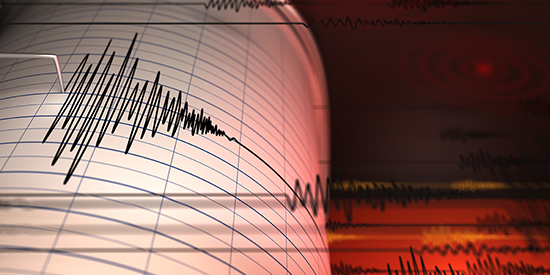Earthquake preparation tips to keep you and your loved ones safe
Share This Article

This has been an unprecedented year and for many of us, life “as normal” has changed. One thing that hasn’t changed? Californians live in earthquake country, and it’s essential to be prepared and able to react quickly to minimize injuries and hazards. During an earthquake, travel routes may be blocked, running gas or water may compromise safety, and access to technology may be limited.
We’ve partnered with the California Governor’s Office of Emergency Services (Cal OES) to share what you need to know to stay safe. Download a convenient fact sheet of these tips and share it with your neighbors and loved ones. And, participate in the Great California ShakeOut on Oct. 15.
1. Participate in Earthquake Warning California
Scientists are still unable to predict earthquakes, but thanks to new technology, individuals and organizations can potentially receive a few seconds of notice to take appropriate safety precautions before an earthquake strikes. Earthquake Warning California utilizes the California Integrated Seismic Network, which is a partnership between Cal OES, United States Geological Survey (USGS), UC Berkeley, the California Institute of Technology and the California Geological Survey. The system uses ground-motion sensors to detect earthquakes that have already started and estimate their size, location and impact. When it detects a significant magnitude, the system issues a ShakeAlert Message, providing a warning before shaking begins. To receive earthquake warnings, individuals and family members can download the MyShake App and ensure phone settings are adjusted to receive emergency alerts, including:
- Government emergency alerts: No-cost text messages for emergency situations (magnitude 5.0 or higher and Modified Mercalli Intensity IV shaking). Subscribe at calalerts.org/signup.html
- MyShake: Free smartphone app that provides iPhone and Android users with audio and visual warnings (magnitude 4.5 and higher and Modified Mercalli Intensity III shaking). Subscribe at earthquake.ca.gov/mobile-application
- Android Earthquake Alerts: Android phones with updated operating systems are automatically subscribed to Android Earthquake Alerts, which use the same technology as MyShake.
Once your phone is set up:
- Set phone location settings for MyShake and Android Earthquake Alerts and government emergency alerts to “always on.”
- Ensure all household members know what an earthquake warning sounds and looks like. You can test a MyShake warning under the “Settings” tab. Individuals may have seen a WEA for other emergencies (Amber Alerts, wildfires, etc.).
- If you receive a warning, immediately take steps to protect yourself. You may receive a warning without experiencing shaking; however, always react with the expectation that shaking will follow.
2. Know how to protect yourself during an earthquake
If an earthquake occurs:
- Drop to the ground, cover your head with your arms and hold onto your neck until shaking stops.
- Do not stand in a doorway. Stay away from large glass windows and mirrors.
- If you have difficulty getting onto or off the ground without assistance, cover your head with your arms as much as possible and try to remain in place. For more accessible safety tips, visit earthquakecountry.org/disability.
3. Develop an emergency preparedness plan
Create a customized emergency plan for your specific needs:
- Think through details of your everyday life, considering locations where you might be during an earthquake (at home, in the car, outside, etc.). If possible, hold practice drills in these settings.
- Learn emergency protocols for your workplace, school, transportation and frequently visited places.
- If you are a parent or guardian, explain to those being cared for what to do during and after an earthquake, in case you or another adult are not present.
4. Pack an emergency supply kit
Your emergency kit should address all daily needs and include:
- A family plan with instructions and information for contacting others (Include a reminder to use text messages, if possible, to keep emergency call lines open.)
- Basic supplies: a radio, first-aid kit, flashlight, batteries, water and non-perishable food for your family and pets
- Prescription and over-the-counter medications, medical equipment (including accessories, like hearing aid batteries or prescription glasses) and medical records
5. Understand and mitigate hazards
Natural disasters can occur anywhere, but earthquakes are more common in certain regions. Visit myhazards.caloes.ca.gov to learn about local risks and how to prepare your home (including securing furniture, appliances, home fuel systems and more).
Access more information and resources
Earthquake Warning California is a comprehensive earthquake warning services program managed by Cal OES. It provides individuals, organizations, and communities with easily accessible emergency preparedness information and resources. For the latest news and resources, visit earthquake.ca.gov.
